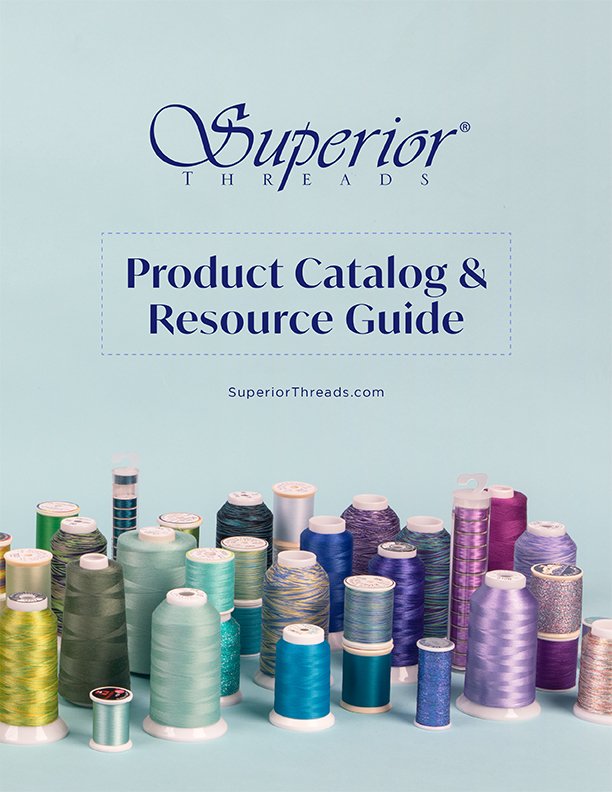Superior Education
MATCHING BOBBIN THREAD
- COLOR MATCHING
- BOBBIN THREAD
- TENSION
Does my top thread need to match by bobbin thread?
Sewing machines are factory preset to have the top and bottom thread form even stitches. If the top and bottom threads are identical in fiber and weight, adjustments are most likely not necessary. However, if we use cotton thread on top and polyester thread on bottom, or metallic on top and poly underneath, or a heavy thread on top and a thin thread underneath, it is necessary to adjust the tension settings.
Here is the most important bit of information in this article: it is OK to use different weighted threads top and bottom. It is also OK to use different fibers top and bottom. Therefore, it is OK to use a polyester 40 wt. thread on top and a cotton 50 wt. on bottom.
Think of the top and bottom thread as having a tug of war. If the threads are identical and you are sewing on a single layer of fabric, both sides have equal strength and the result will be a draw. The sewing should therefore produce perfectly even stitches with no top thread showing underneath and no bobbin thread showing on top. However, in the real world, the teams are rarely equal. One team will be stronger or bigger or faster than the other. We use decorative threads on top. We often use different fibers for the top and bottom threads. We also add stabilizer or batting. Sometimes we might use a cotton bobbin thread and other times we use a polyester bobbin thread. All these factors make it necessary to adjust the tension for each project. By adjusting the top tension either up or down, we are able to add or take away strength on the top thread team to equalize the tug of war battle.

A quilt with balanced top and bottom thread tension

Fabric type can affect stitch results
What can affect stitch results?
- Batting: This adds drag on top thread. Cotton batting tends to grab the thread more than poly batting, adding more friction on the thread.
- Fabric type: Dense fabric puts more stress on the thread.
- Top thread thickness and type: Metallic thread is less flexible than cotton threads or polyester threads. Polyester threads are usually considered to be stronger than either cotton or rayon, but it's not always the case.
- Bobbin thread type: Cotton bobbin thread tends to grab more than a smooth polyester thread. Sometimes grabbing is preferred and sometimes it causes problems. A smooth polyester thread (not spun poly) in the bobbin will work better with metallic thread or a heavier cotton thread than spun poly thread because its silk-like finish acts almost like a lubricant, sliding nicely with the thread.
Approximately 90 percent of the home machines on the market are compatible with an L-style or Class 15 bobbin. Although some machine dealers warn against using prewound bobbins, it is a fact that many of the educators on their staff do use them. If we need to define a risk in using a prewound bobbin, it isn't that it will void your warranty (an unfortunate myth that has been perpetuated in the quilting industry). The risk of prewounds is in the thread quality. Make sure you use a good quality thread and clean the bobbin area regularly. The advantage of using prewound bobbins is in saving time and not having to wind your own bobbins. Prewound bobbins also hold much more thread than self-wound bobbins.

 View Our Product Catalog
View Our Product Catalog